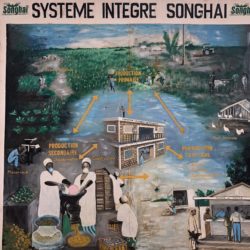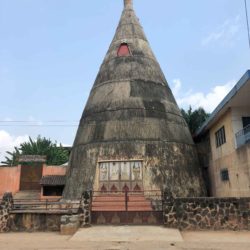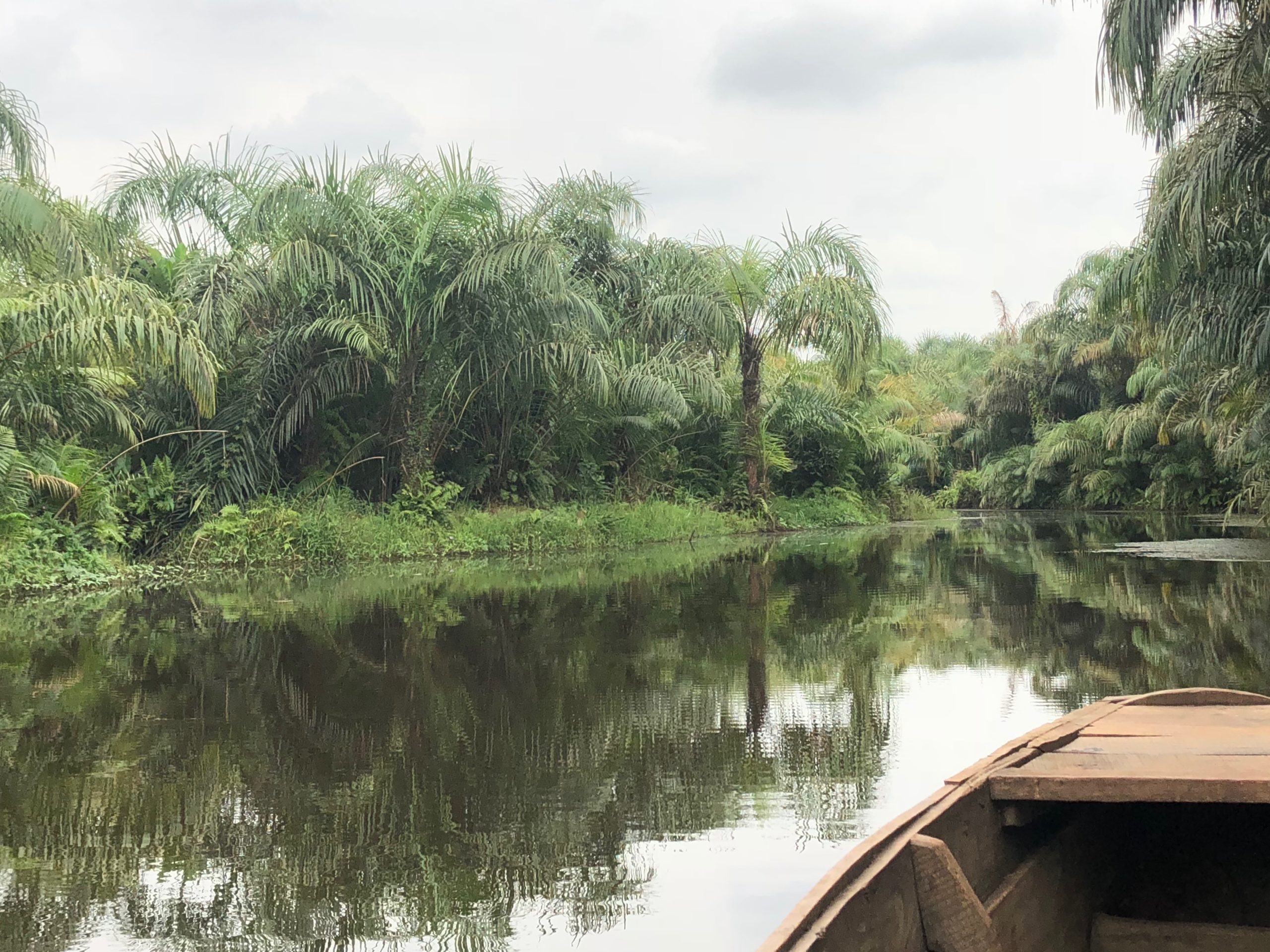
When Rodrigue asked if I’d like for him to be show me around Adjarra for the day, I replied, “Adjarr-where?” For someone who thought he had come to Porto-Novo well-researched and prepared, I sure had a lot to learn. (This also speaks to the dearth of information that is available when planning a trip to West Africa.)
Adjarra, as it turns out, was once a separate village located 10km (6mi) north of Porto. As both cities have continued to expand over the decades, Adjarra has essentially become a northern suburb of the capital, although you can immediately sense when you cross the Porto/Adjarra city limits. This is due to the Adjarran local culture very much remaining intact; most notably the people still speak Adjarran, a language Rodrigue is also fluent in, his expertise granting me greater access when interacting with locals. Curious to see what life was like on the northern edges of the capital, Rodrigue and I planned to meet up for a second day in a row and journey to Adjarra together.
Musée d’Adjarra* (Museum of Adjarra)
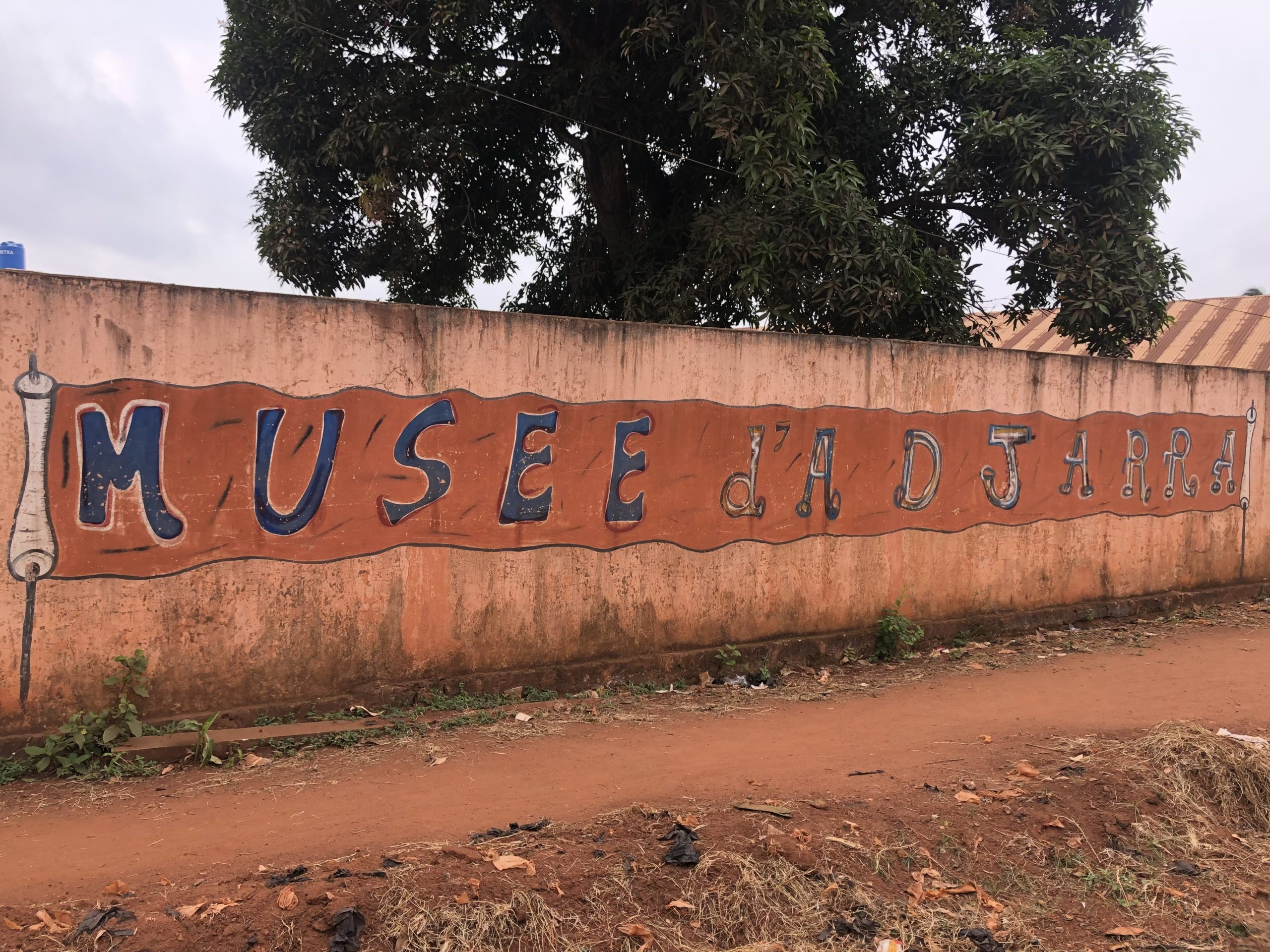
*I saw Adjarra spelled both with a double “r” and only one “r.” For the purpose of this blog, I will be using “Adjarra,” as it appears to be the more authentic of the two spellings; if it’s good enough for the official Museum of Adjarra, then it’s good enough for me!
I’m glad Rodrigue was by my side to help me negotiate with the zem drivers because they definitely wanted to overcharge me to go to Adjarra. We worked out a deal for one zem to carry both of us on the back seat, even though you technically are supposed to only have a single passenger per zem. The driver also wasn’t familiar with the location of the Museum of d’Ajarra, and giving a street address, if it even exists, wouldn’t be of any help either. It’s always a good idea to know a few landmarks around wherever you wish to go. Otherwise, your zem driver will just stop to ask people on the side of the road if they know the way to your destination!
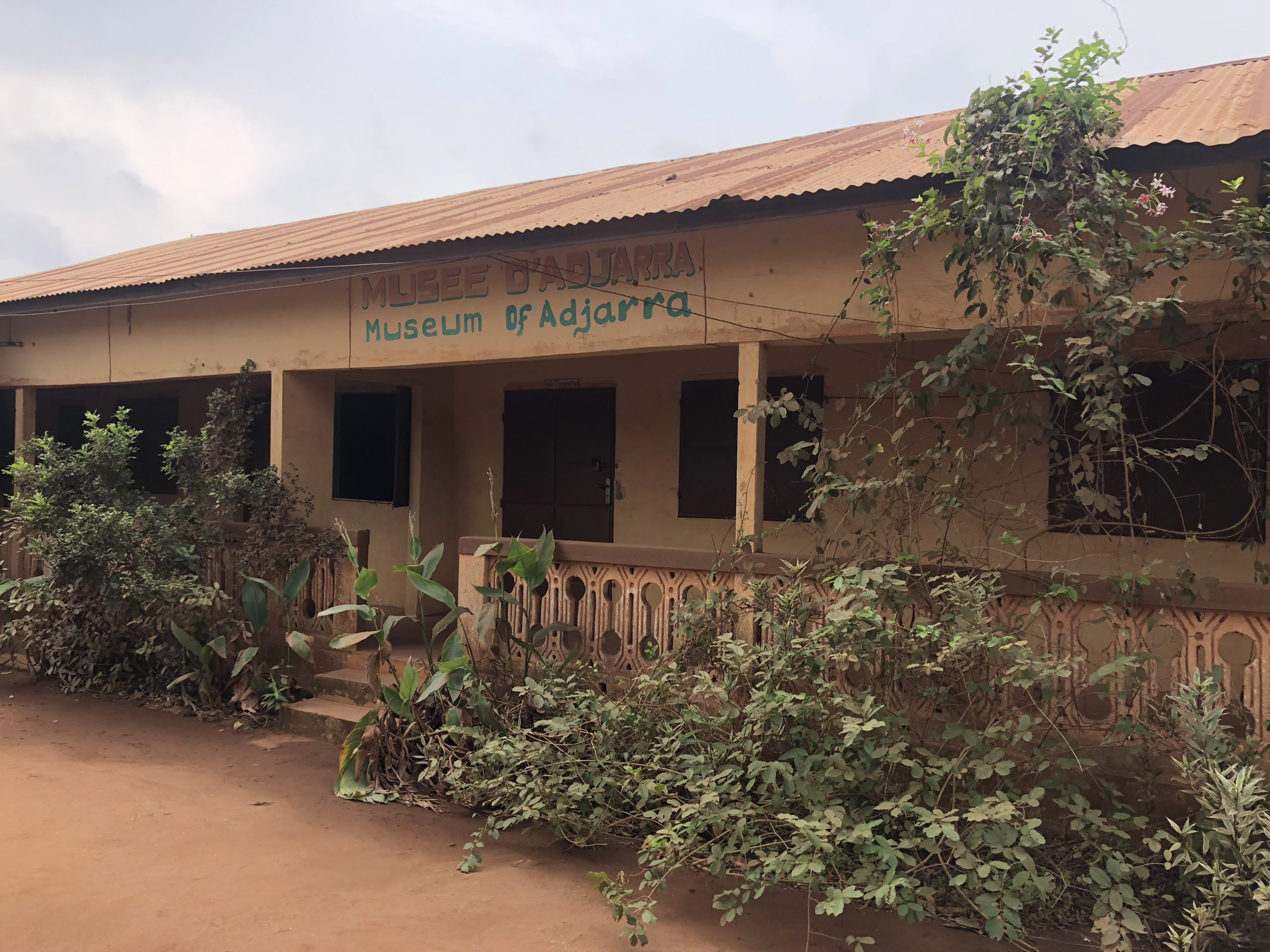
Seeing as I knew nothing about Adjarra before the day began, Rodrigue’s first instinct was to make a pit stop at the Museum of Adjarra to lay a foundation of background information about the city/village. (Everyone kept referring to Adjarra as a village, but the population has swelled to almost 90,000, which seems to me like it left its village mantle behind long ago, and at the very least must be considered a town, if not a city.) Adjarra’s eponymous museum focuses more on the culture of the city rather than its history. There is an impressive collection of tribal masks, as well as a look into the various artisanal skills that have turned Adjarra into something of a cultural center in southern Benin.
Monument de la Place Albert Gogan (Monument of Albert Gogan Square)
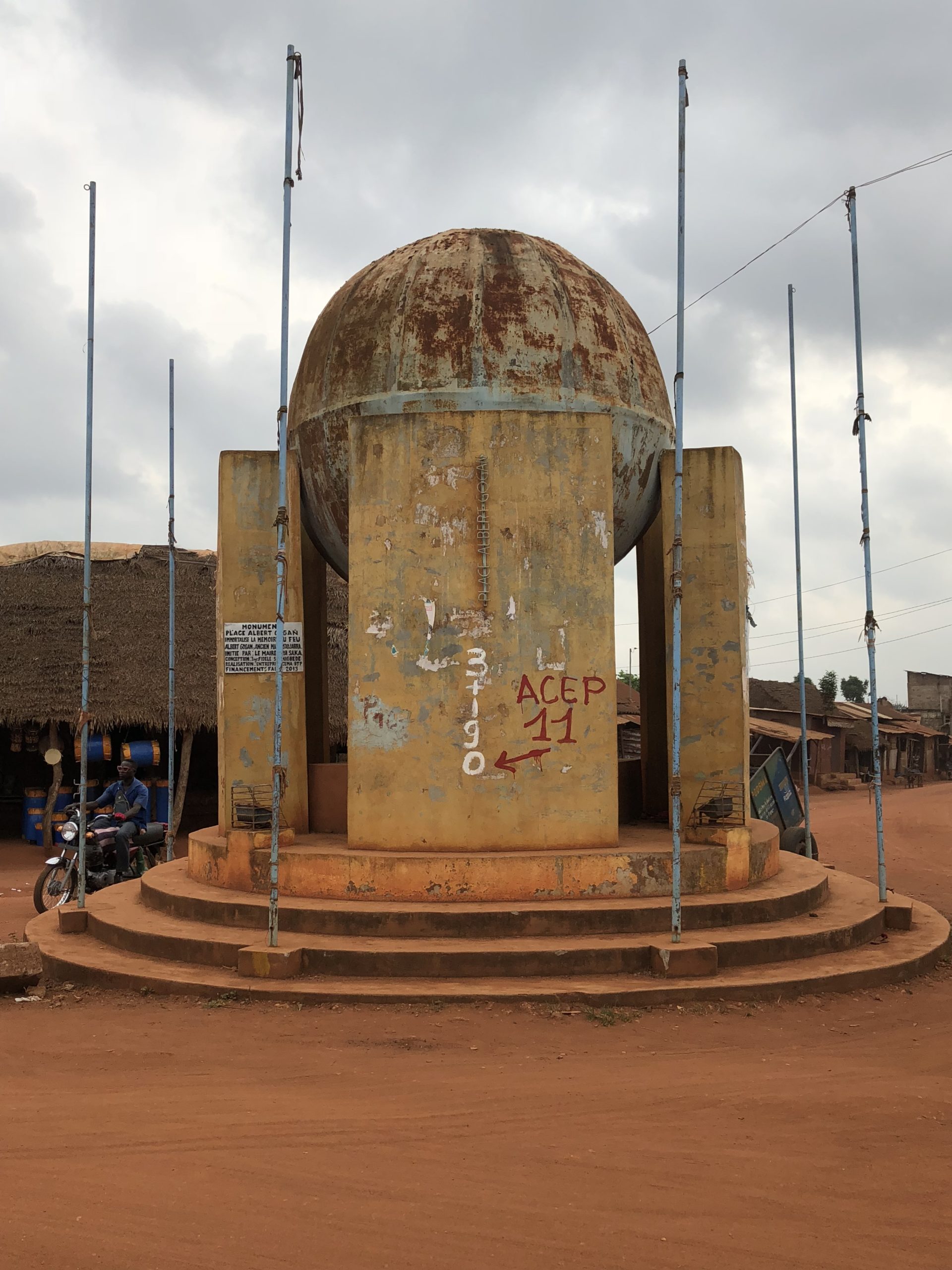
For only being installed in 2013, the untitled monument in Adjarra’s central Albert Gogan Square has certainly seen better days. Gogan was a beloved mayor of Adjarra who died suddenly in 2010. He was an agricultural engineer who strove to make improvements for the farmers and fishermen of the city. I loved this rusty sphere, held aloft by four pillars. It manages to appear both modern and retro, as if it could easily fit in with the Art Deco pieces at the 1933 Chicago World’s Fair, while also clearly being a contemporary piece of art. In less than a decade, the monument has seemingly managed to age one hundred years, adding to its mystique of existing simultaneously in the past and the present.
Marché d’Adjarra (Adjarra Market)
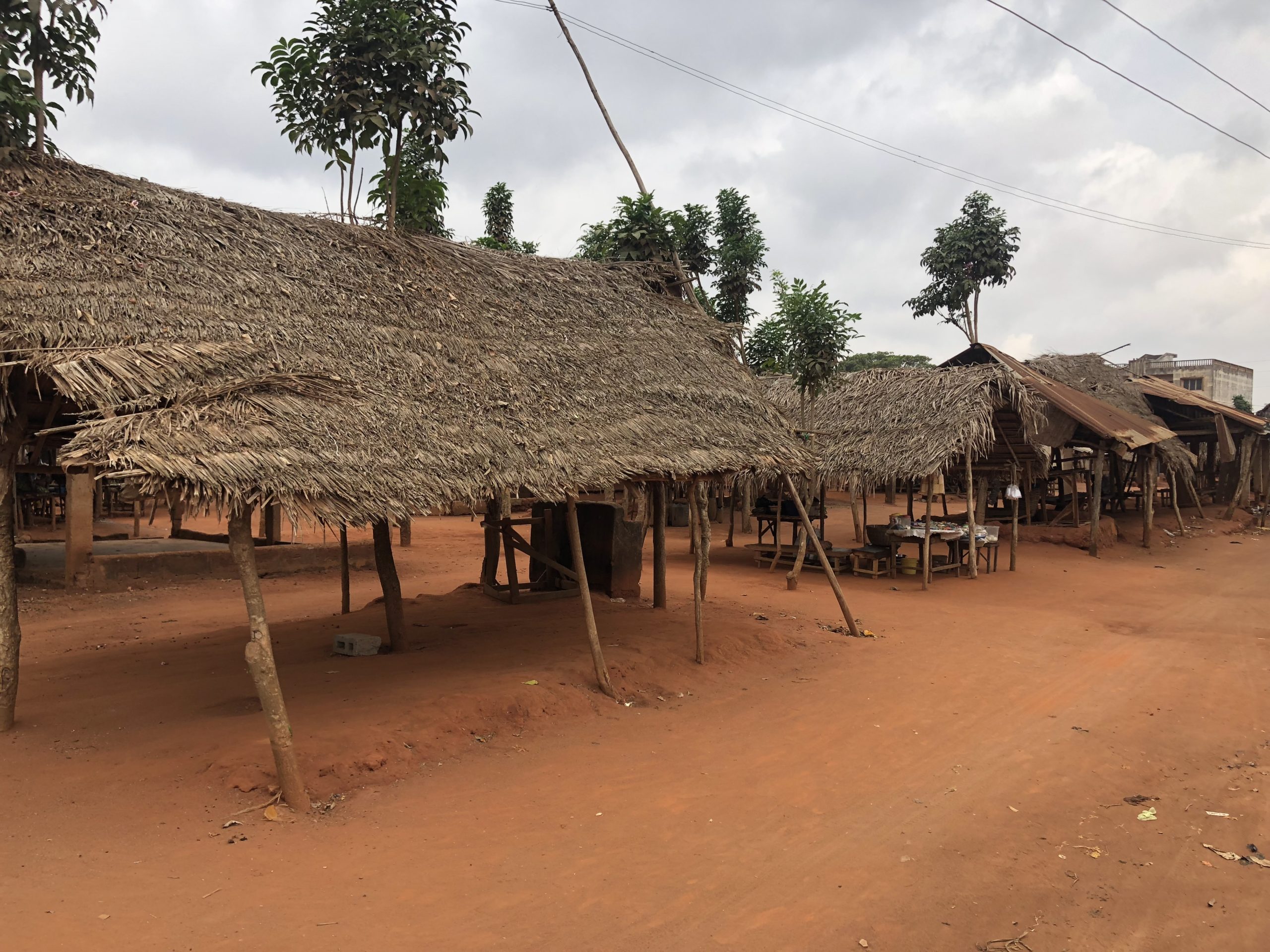
The market in Adjarra only convenes every fourth day, and when we showed up to the marketplace we were informed the festivities had occurred the day before. Aside from the usual produce, meat and assorted foodstuffs, the market is most famous for its crafts, pottery, baskets and cloth, as well as wooden and metal figurines and statues. There is even a special drum section of the market where you can buy tam tams, a traditional Adjarran percussion instrument that is only made by local villagers. Although the market was closed, the artisans were still hard at work, and Rodrigue and I were welcomed into the various shops; I even became an apprentice of a blacksmith for five minutes before I was fired for making everyone laugh too much at my inept skills!
The Artisans of Adjarra
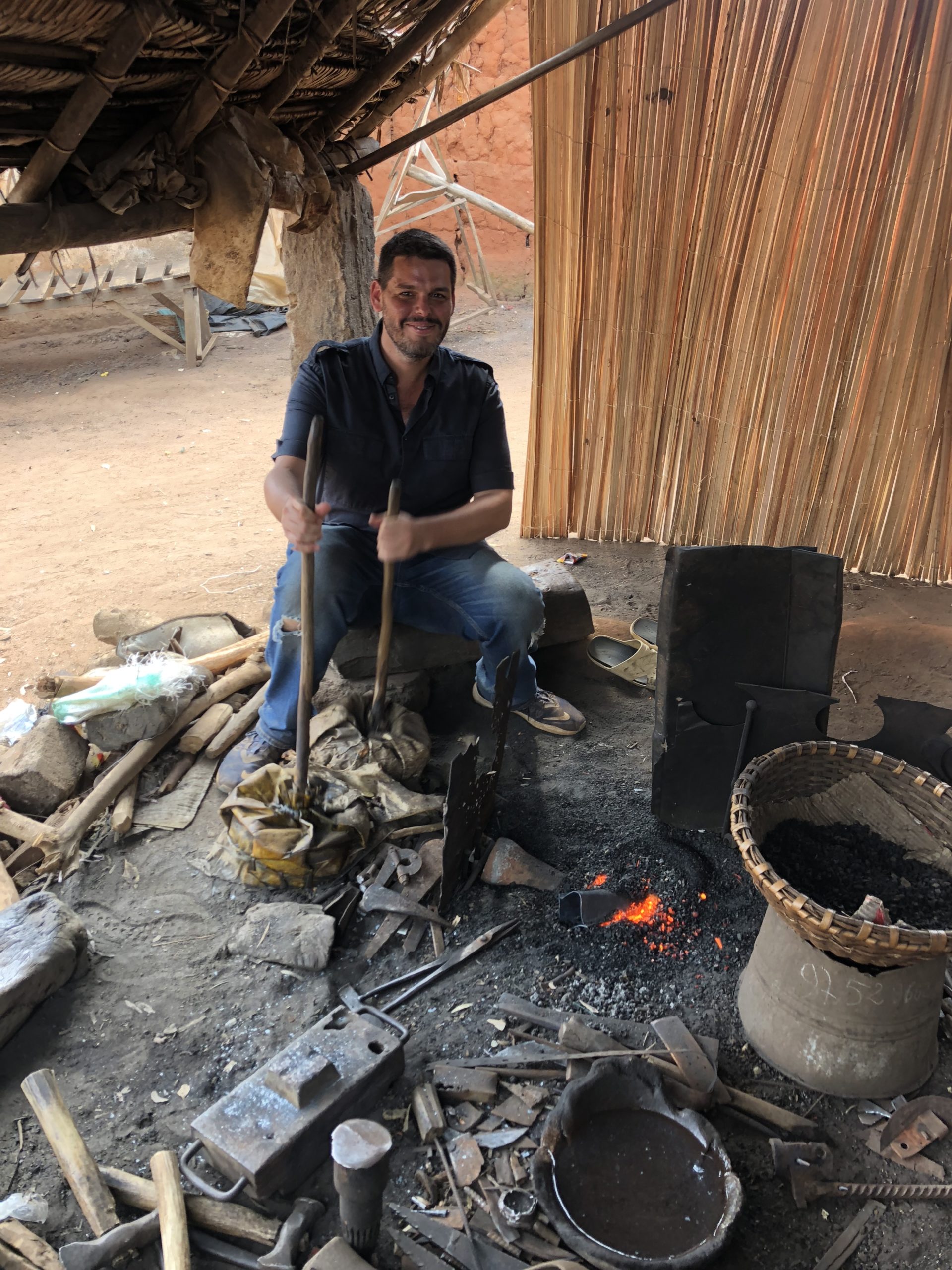
If there ever was a day for my father to have switched places with me on my travels, this was it. I’m a complete failure when it comes to tools, woodworking, and the like, but my dad has taken to household projects like a fish to water. He would have been able to take the blacksmith’s instructions far better than I did, but somehow I mustered the strength to pump those bags and keep the embers aglow as he hammered the metal bells into their destined shapes.
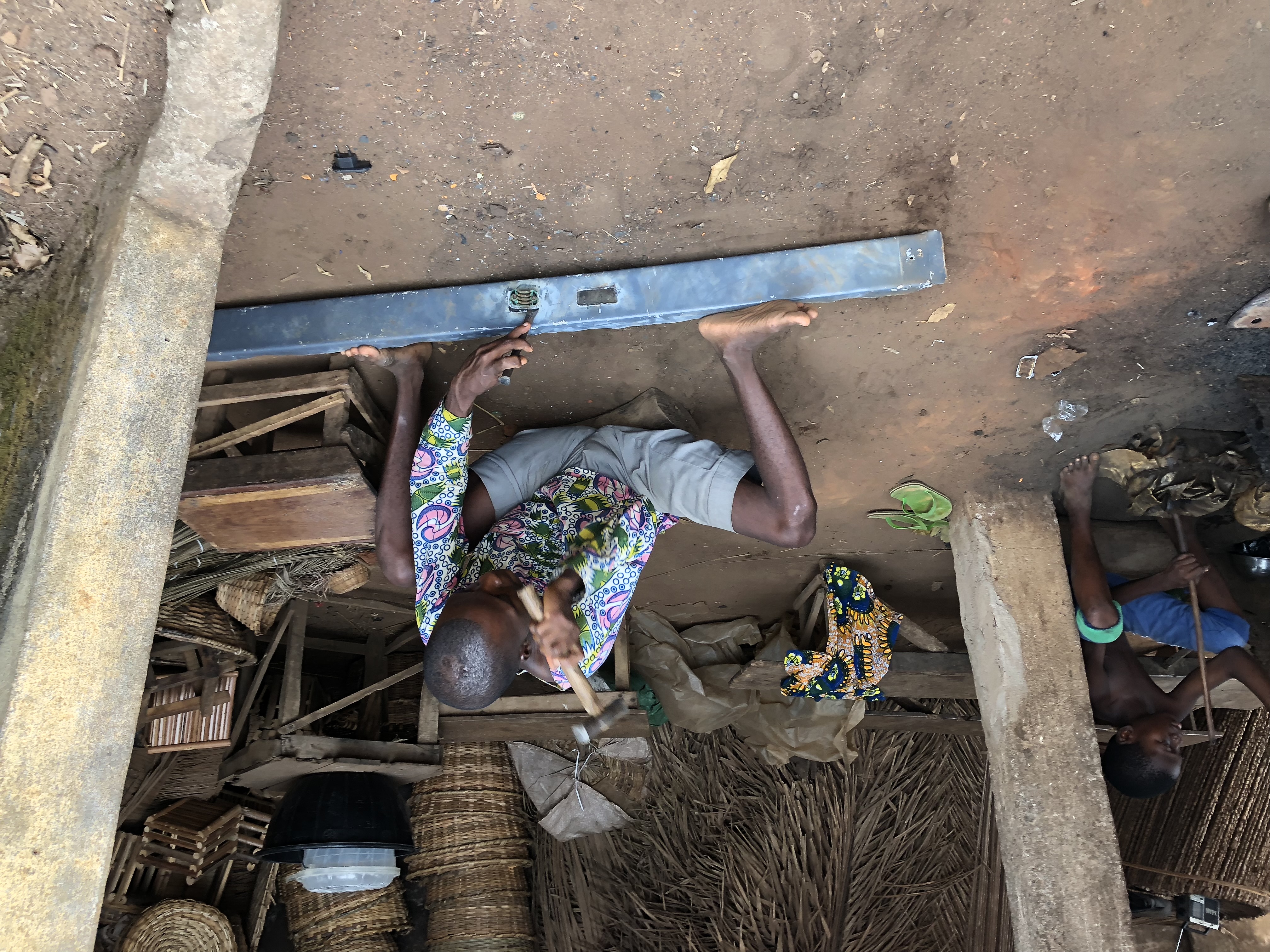
The blacksmiths primarily use scrap metal, which they melt down and recycle into new items. There’s no running to Home Depot or ACE Hardware if you need a new shovel or garden hoe in Adjarra. The blacksmiths provide all the tools for the local farmers, causing their time to be split between making decorative items for the market and practical accessories for the local workers.
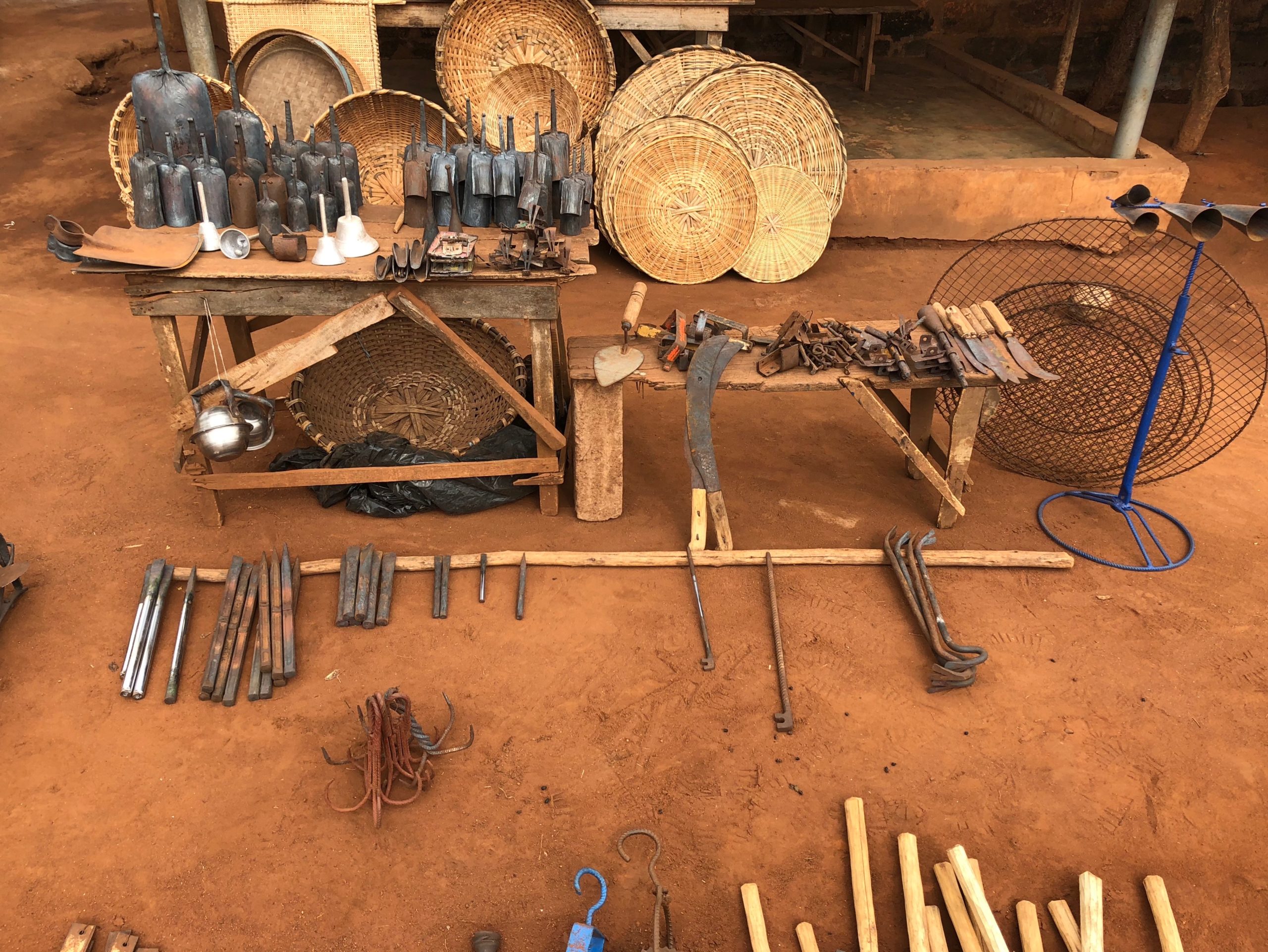
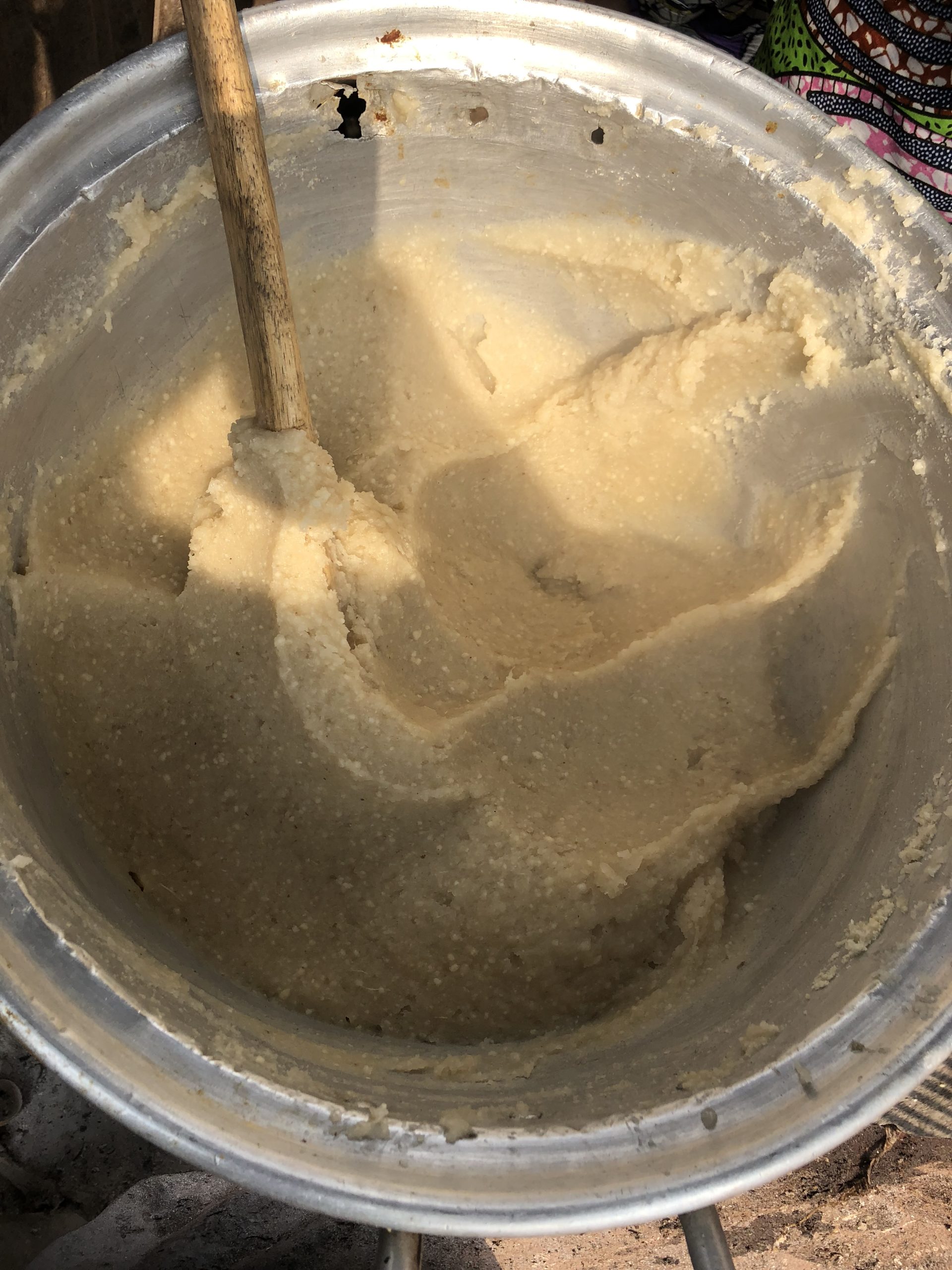
It’s not just handicrafts on display around the market, but cooking demonstrations as well. This woman (who didn’t want to be photographed) even let me stir her mixture of cassava and water as she beat it into a thick dough that was rather the consistency of peanut butter. Yes, I got to sample the goods afterwards and it was delicious!
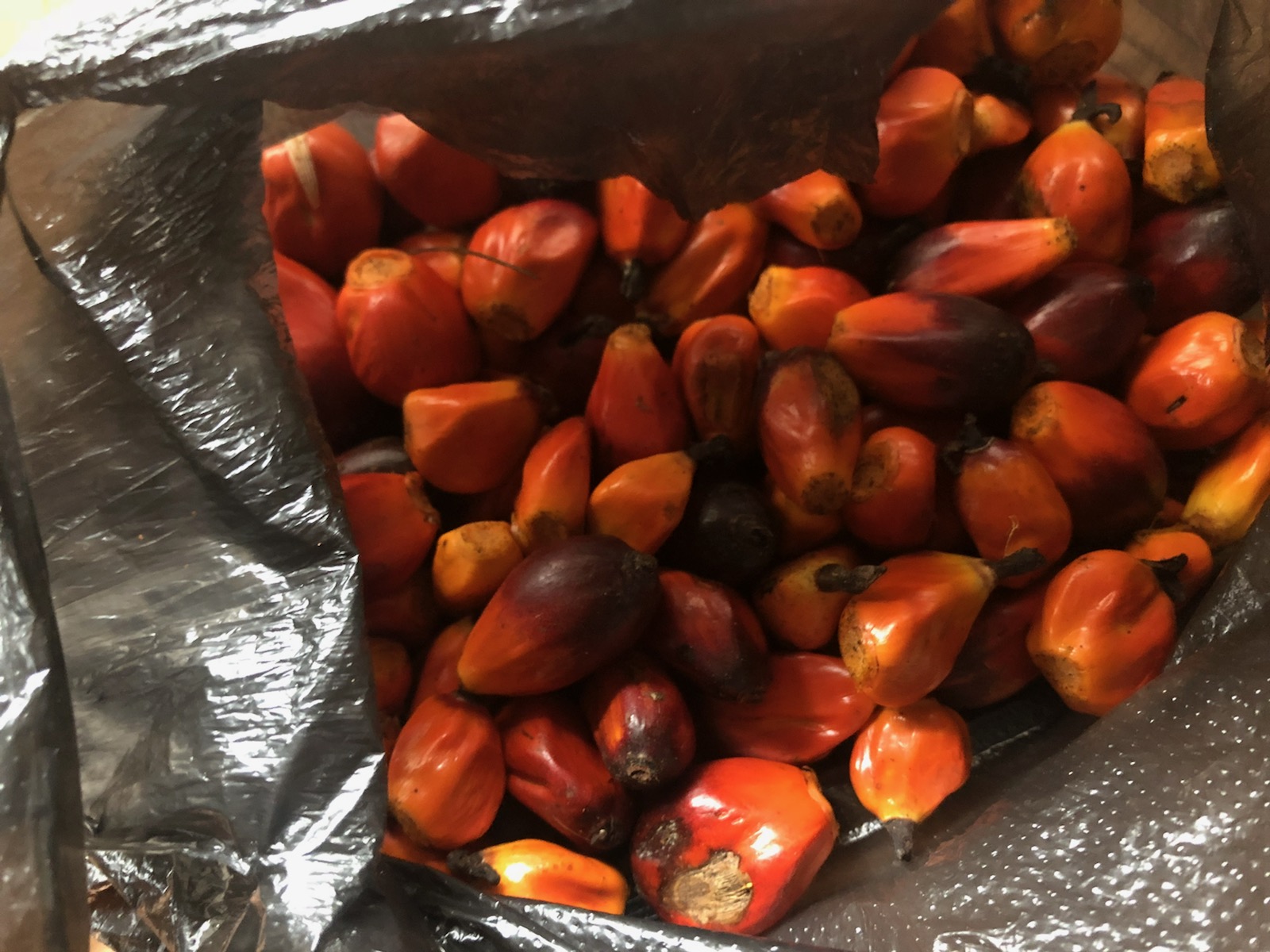
Palm nuts and their byproducts are some of Benin’s largest exports, and Adjarra in particular is known for its palm nut production. I can’t say I particularly like the taste of palm nuts, but they’re at least a colorful addition to any marketplace. Palm nuts contain high levels of lauric acid, the substance that makes soap and detergent lather. Palm oil is also used as a lubricant by mechanics and farmers when their equipment needs a tune up.
Forêt Sacrée de Oro-Zoun (Sacred Forest of Oro-Zoun)
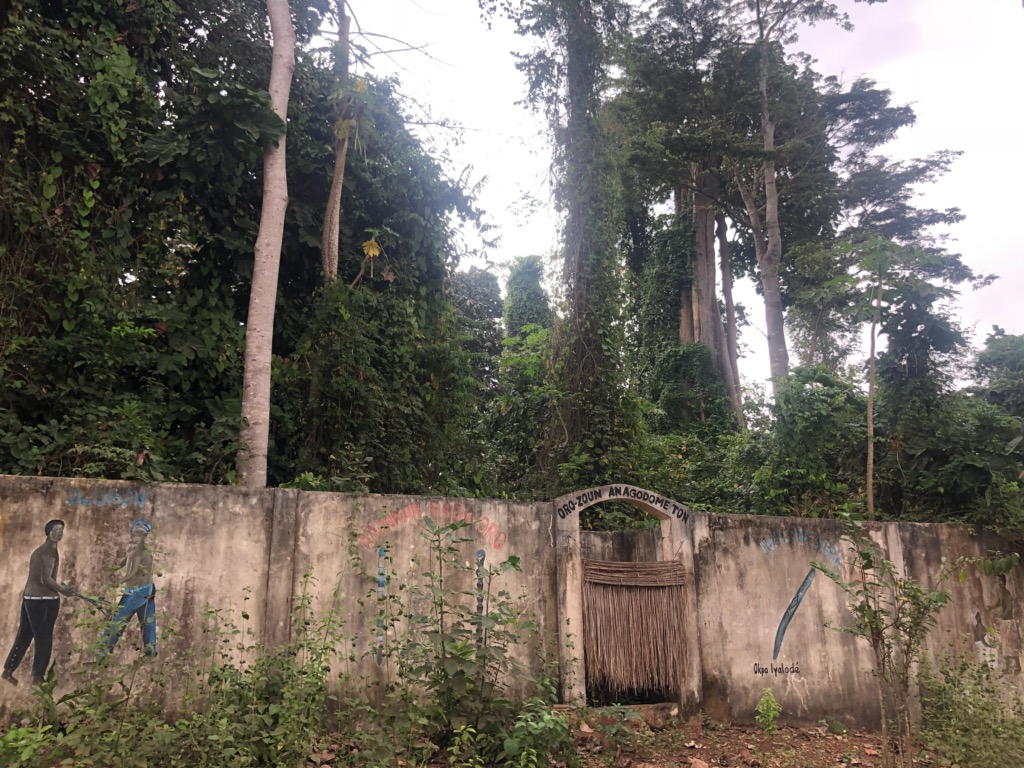
Past the Marché d’Adjarra and the main residential area of the city, lies the Sacred Forest of Oro-Zoun, that even with Rodrigue by my side I was not permitted to enter. Vodun priests use the forest to perform holy rituals and gather ingredients for fetishes. If Lomé has the Fetish Market superstore, this is Adjarra’s all-natural version in an idyllic setting. There is a large Vodun population in Adjarra and you can spot fetish shrines all over town.
Pirogue Trip Down the Rivière Noire
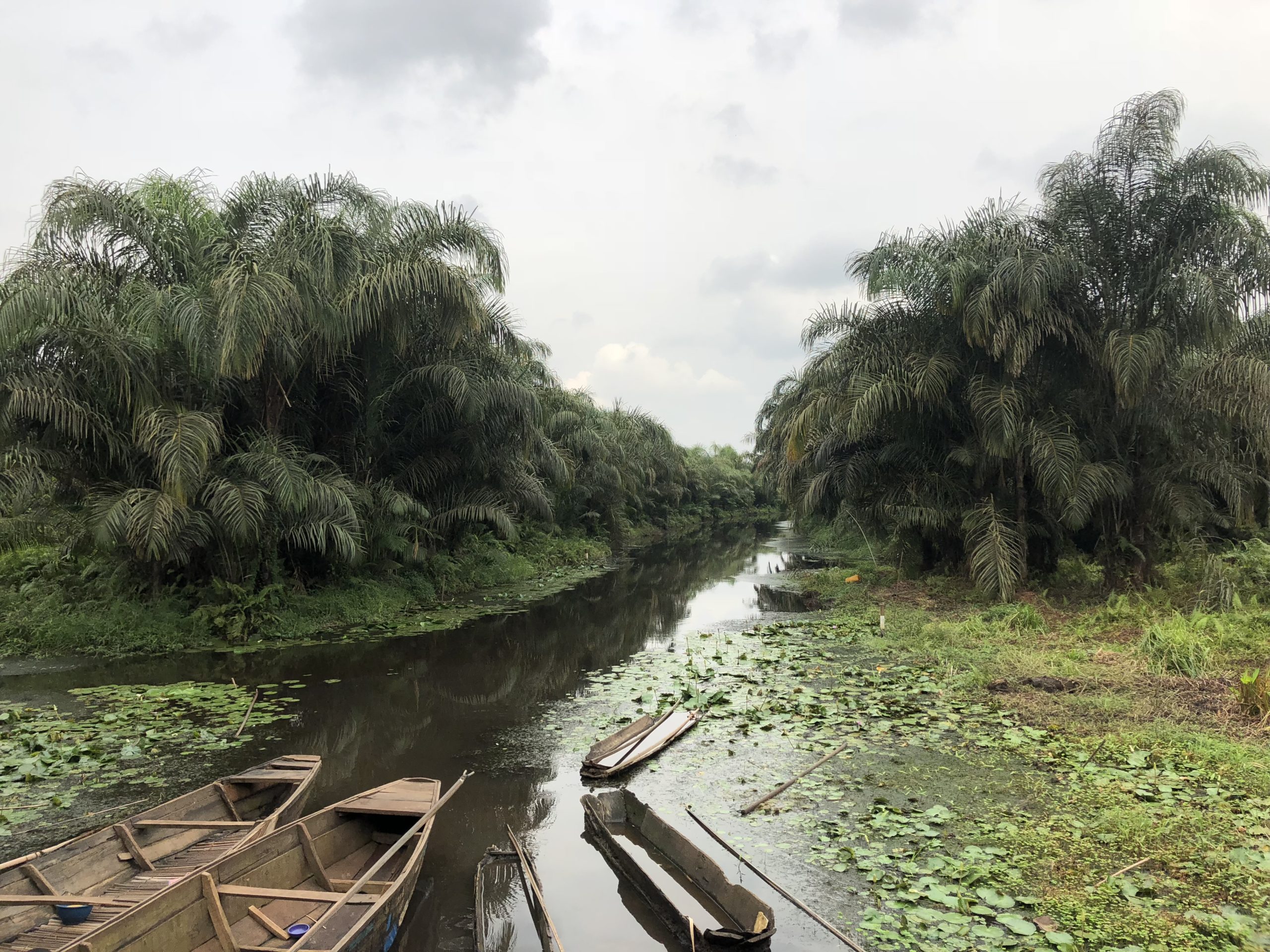
My favorite part of this Adjarran odyssey was the pirogue ride Rodrigue and I took down the Rivière Noire so that we could visit a distillery in a village north of the city. At this point, we were about 16km (10mi) from downtown Porto, but it felt like we had been plopped down into the middle of the Amazon rainforest. All the sounds of Adjarra faded into the background and all we could hear were the symphony of insects and the gentle rippling of the water as the pirogue moseyed down the river.
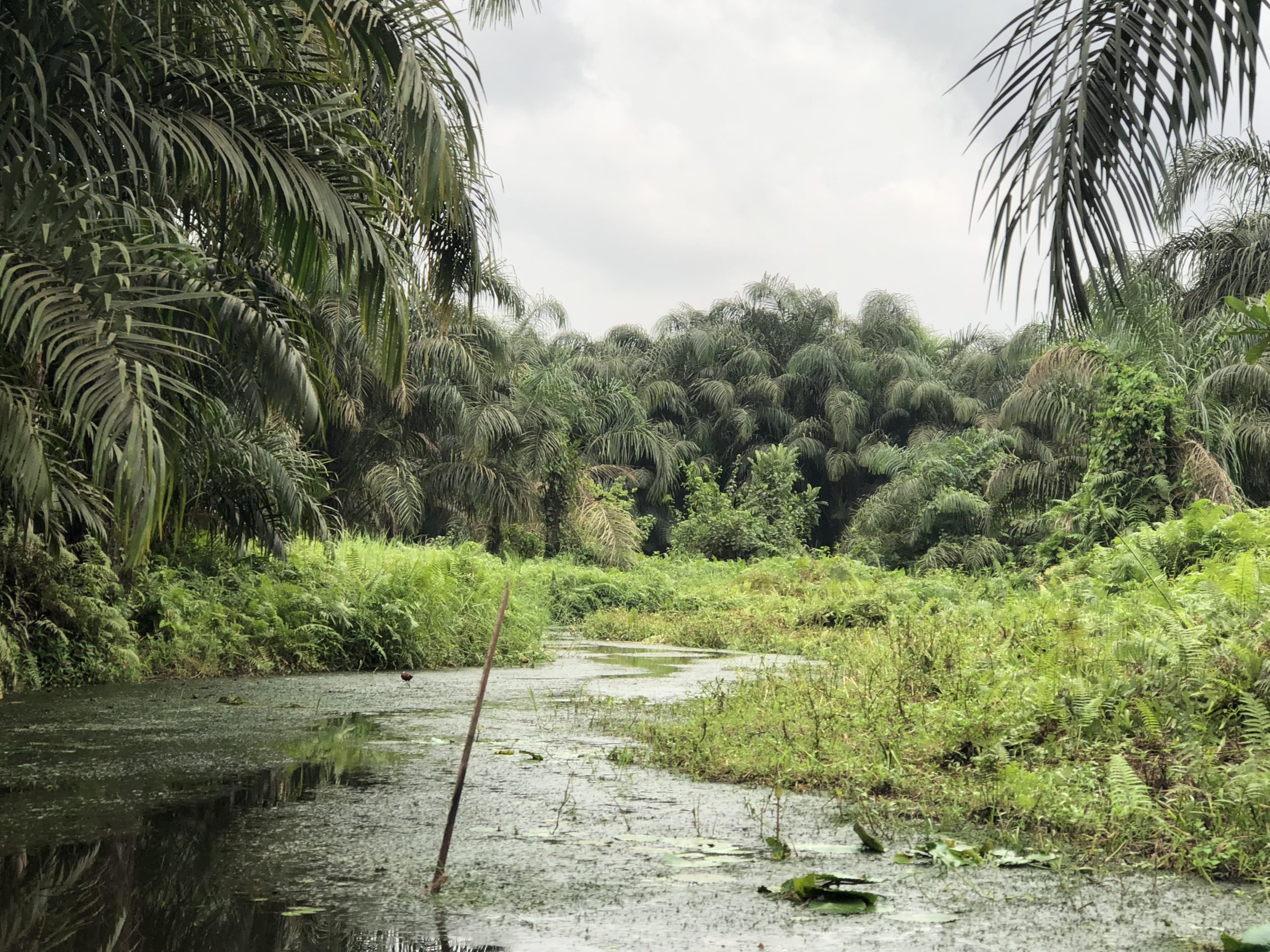
Little side streams break off from the Rivière Noire and encircle the floating islands of trees, reeds and marshy grasses that make up the ecosystem north of Adjarra. Locals know these waterways like the back of their hands and take trips deep into the forests to fish and gather plants for basket weaving or to create dyes for the cloth sold at market. This is not the river in which you want to go for a swim: the crocodiles will make a quick snack out of you if the poisonous snakes don’t find you first.
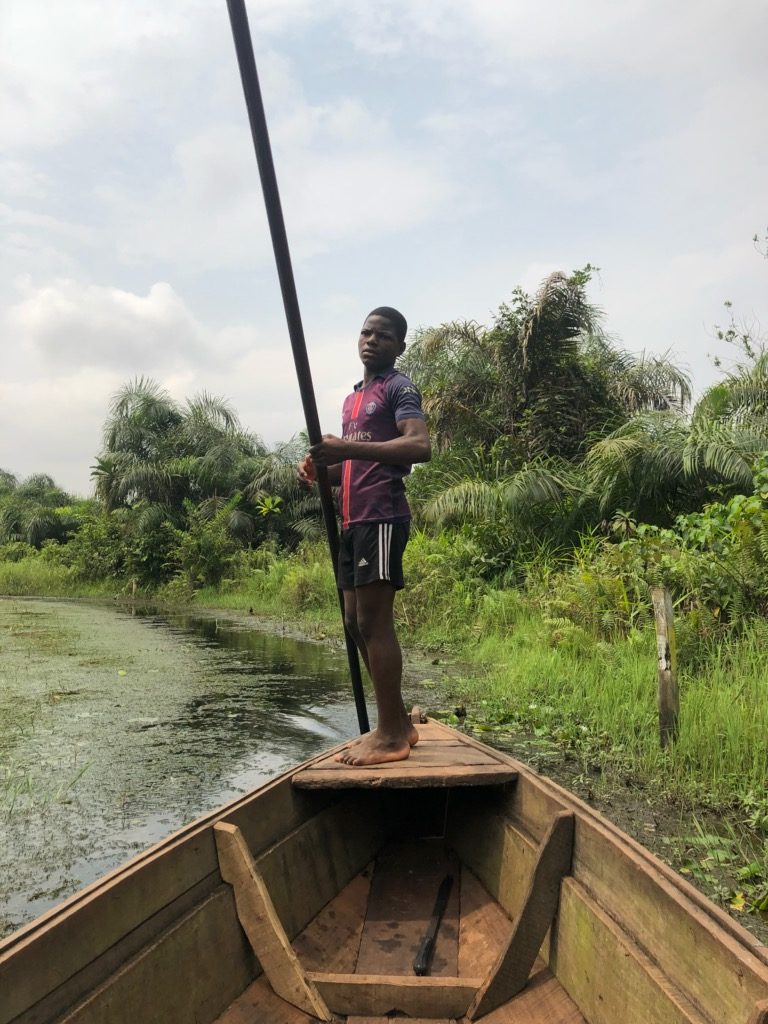
To take a pirogue down the river, you will need to find the men who own the boats and negotiate a price for the journey. Make sure you mention that you need to go there and back, or they will just assume you are making a one-way trip. The owners will then assign a teenager to navigate the pirogue and propel it on its way; they promise to give the boy a cut of the fee, but in reality it won’t be much, so make sure you tip your “captain” well, as he’s the one who’s actually doing all the hard work!
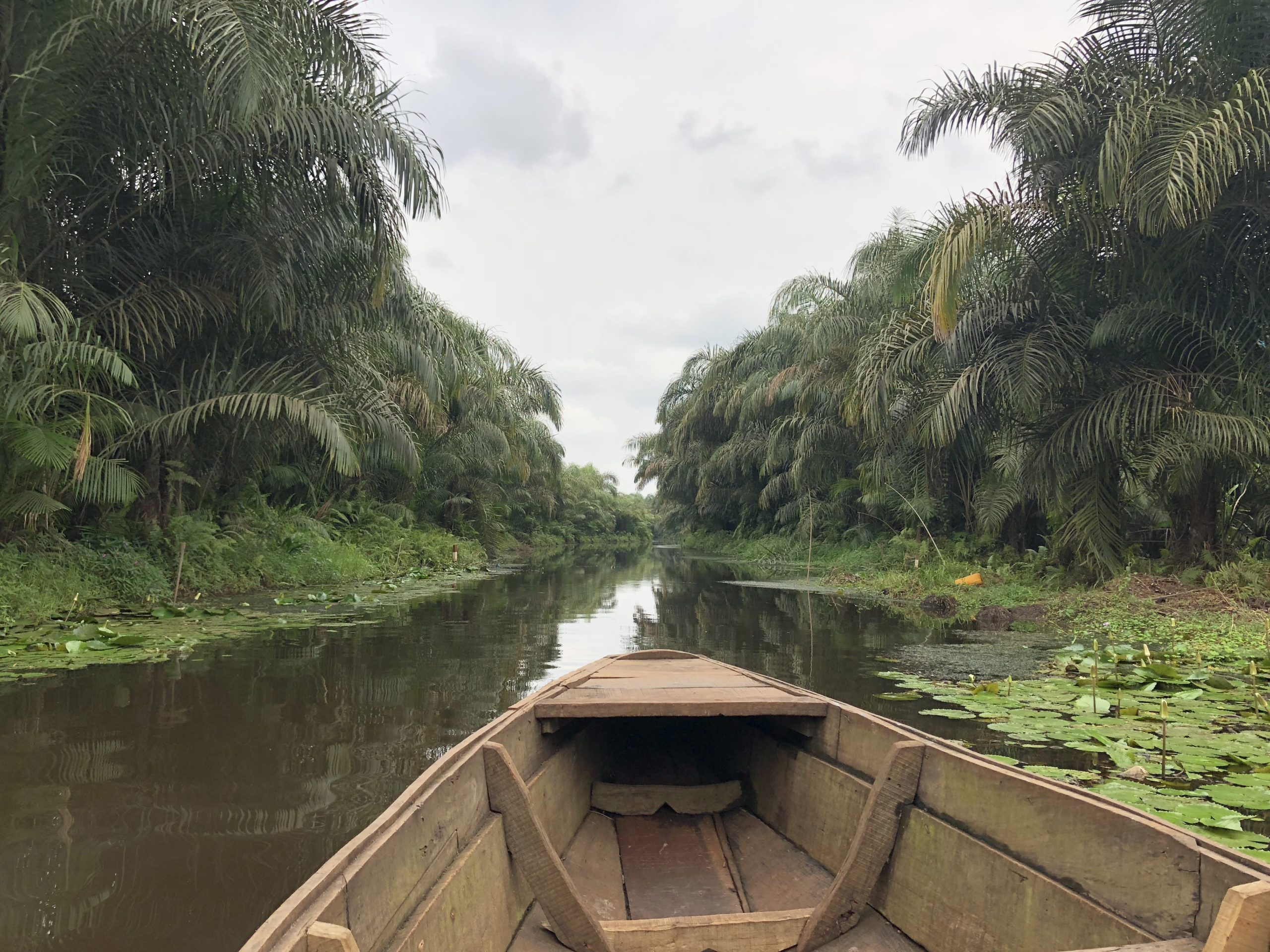
Béninois Village Life
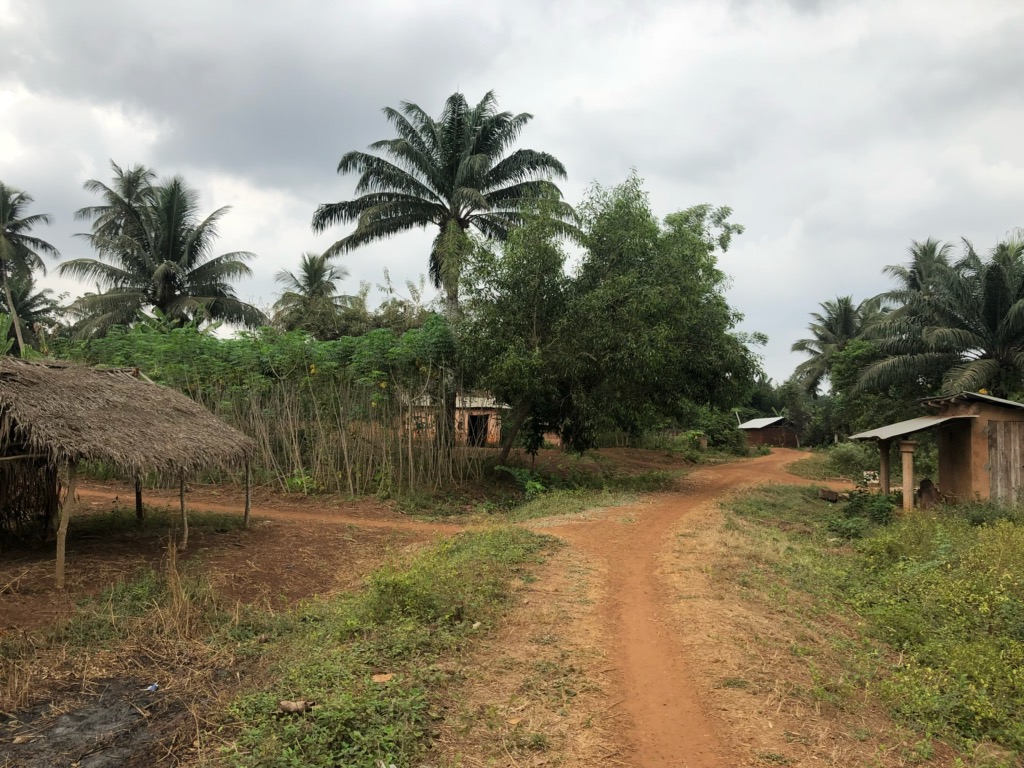
Adjarra proper may have outgrown its “village” label, but at the far reaches of the Rivière Noire, you will find yourself in a totally rural environment. Many homes have neither electricity nor indoor plumbing and the residents would have to take a pirogue to the Marché d’Adjarra to stock their pantries. Rodrigue knew of a family who runs a little distillery, making very potent alcohol from the palm nuts that are so plentiful in the area.
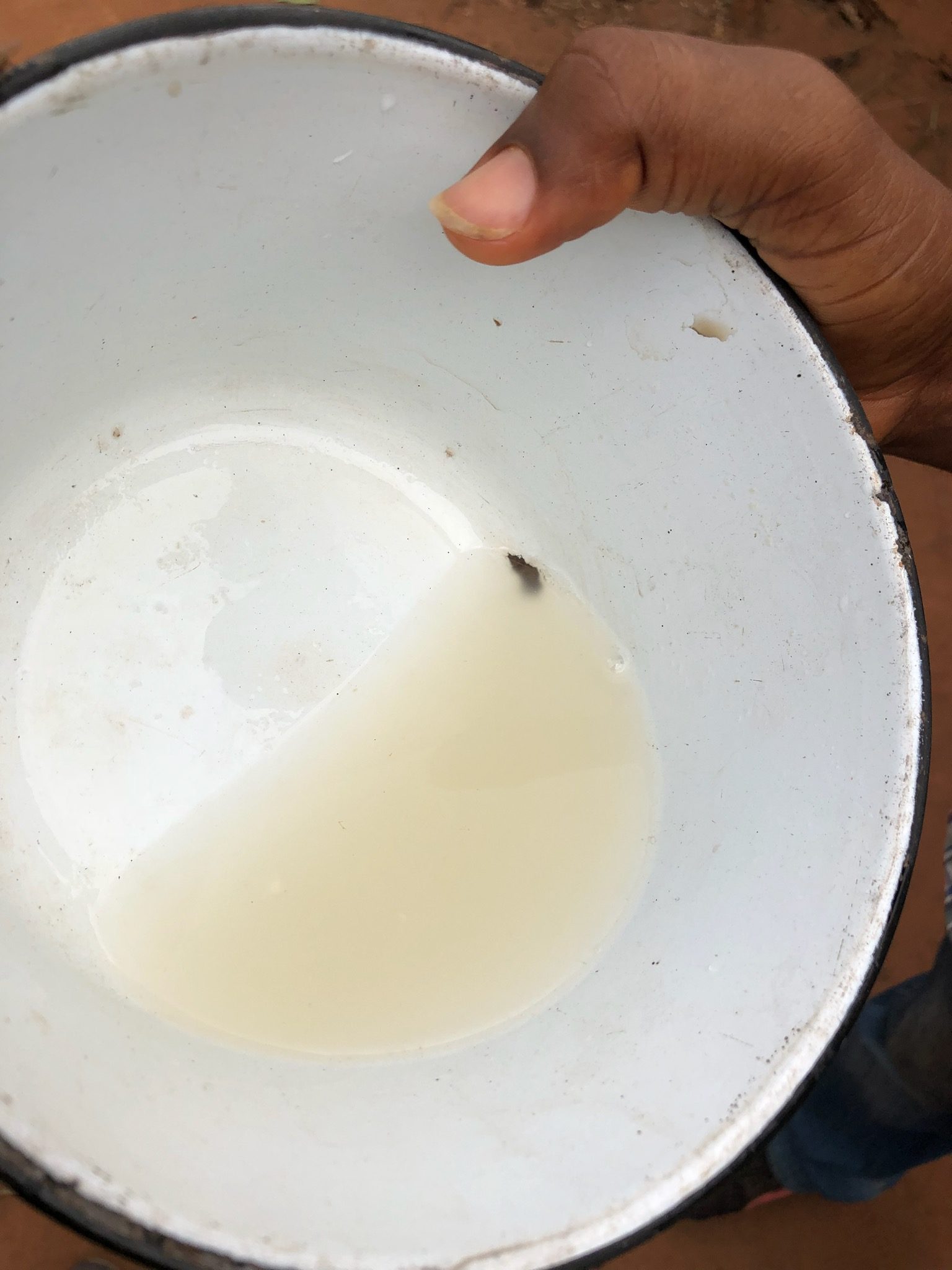
At the distillery homestead, Rodrigue and I were greeted by a large family, but it was granny who appeared to be running the show, including turning the mill that was producing the alcohol. The liquor collected in a bowl at the end of a chute and after observing how it was made, we all passed around the bowl and took a drink. As if I were a child who had never had tasted alcohol before, I coughed and my eyes welled up with tears as the liquid burned my throat and stomach. Everyone else got a good laugh at my reaction and after declining to purchase a full bottle, Rodrigue, the pirogue operator and I were on our way back to the Rivière Noire for one last mini-adventure in Adjarra.
Thunderstorm at the Marché d’Adjarra
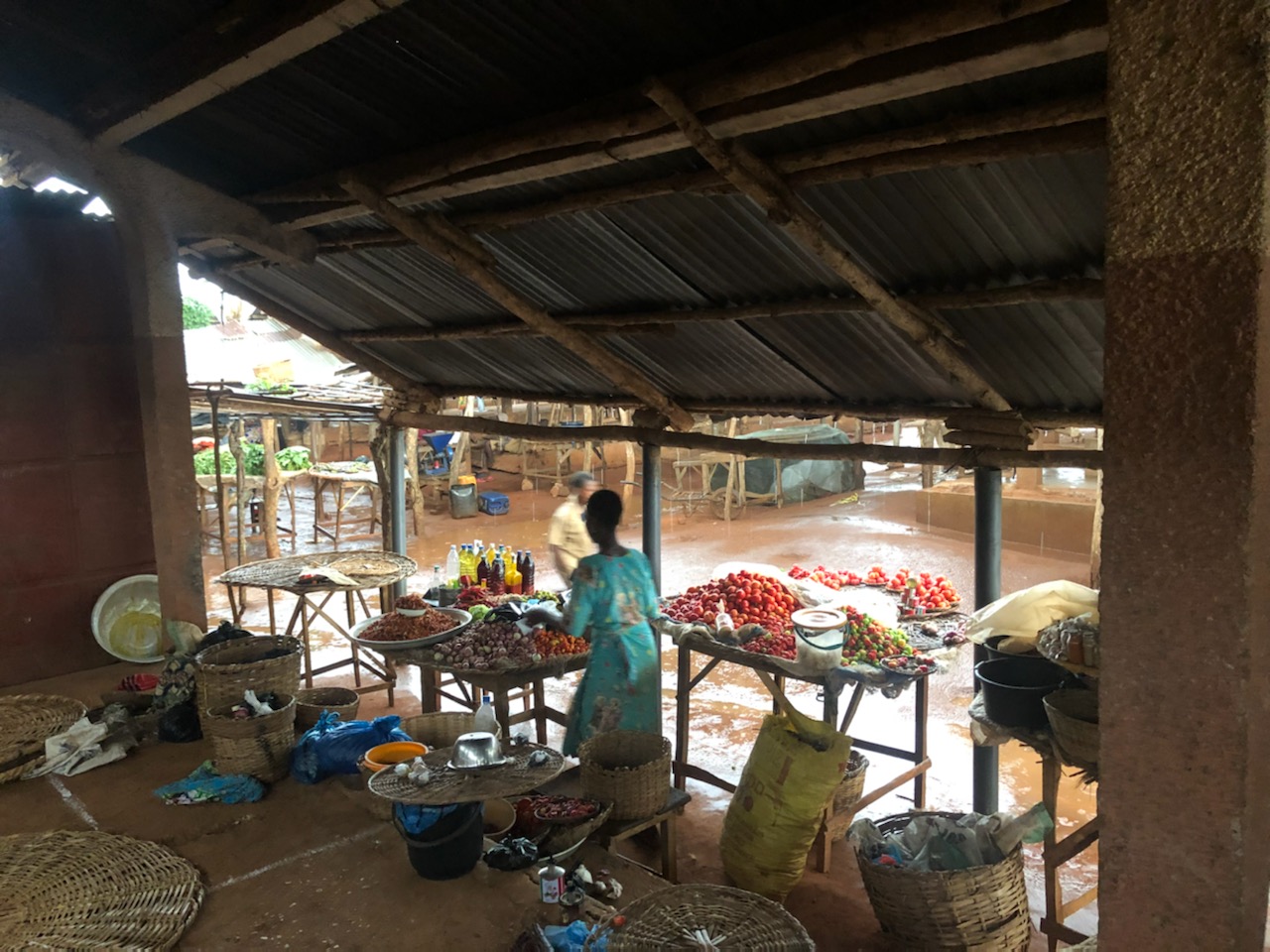
Just as Rodrigue and I found ourselves back at the nearly-deserted market stalls, the heavens opened above us and the rain came pouring down all over Adjarra. The stalls have metal roofs, which amplify the sound of the droplets pelting their surfaces. The market pathways turned into roaring rapids and the deluge continued for what felt like hours. I guess it could have been worse. We could have still been sitting in the pirogue smack in the middle of the Rivière Noire, so at least we were dry as the world got drenched around us.
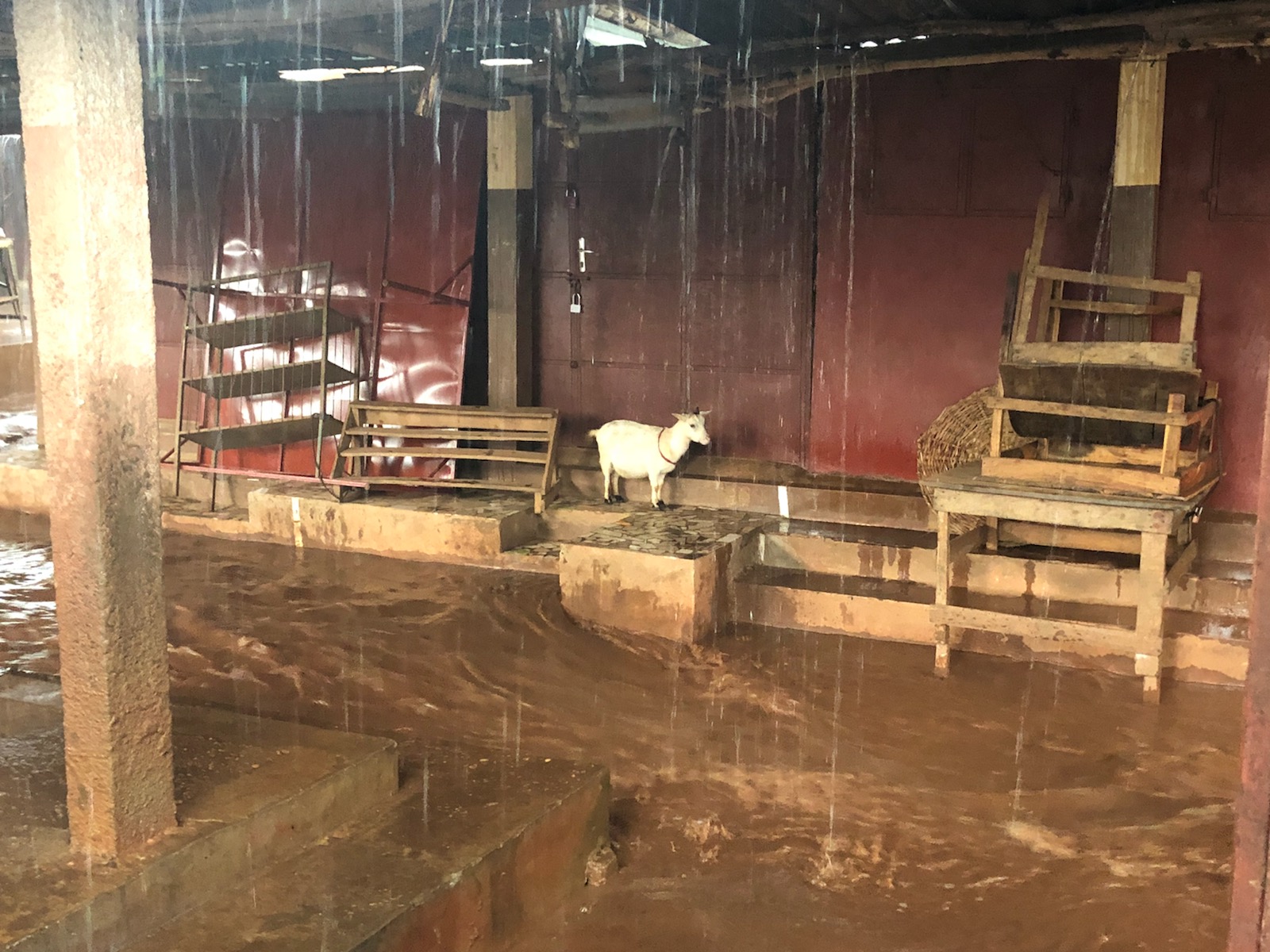
Street Food, Beer and Fine Friends Back in Porto
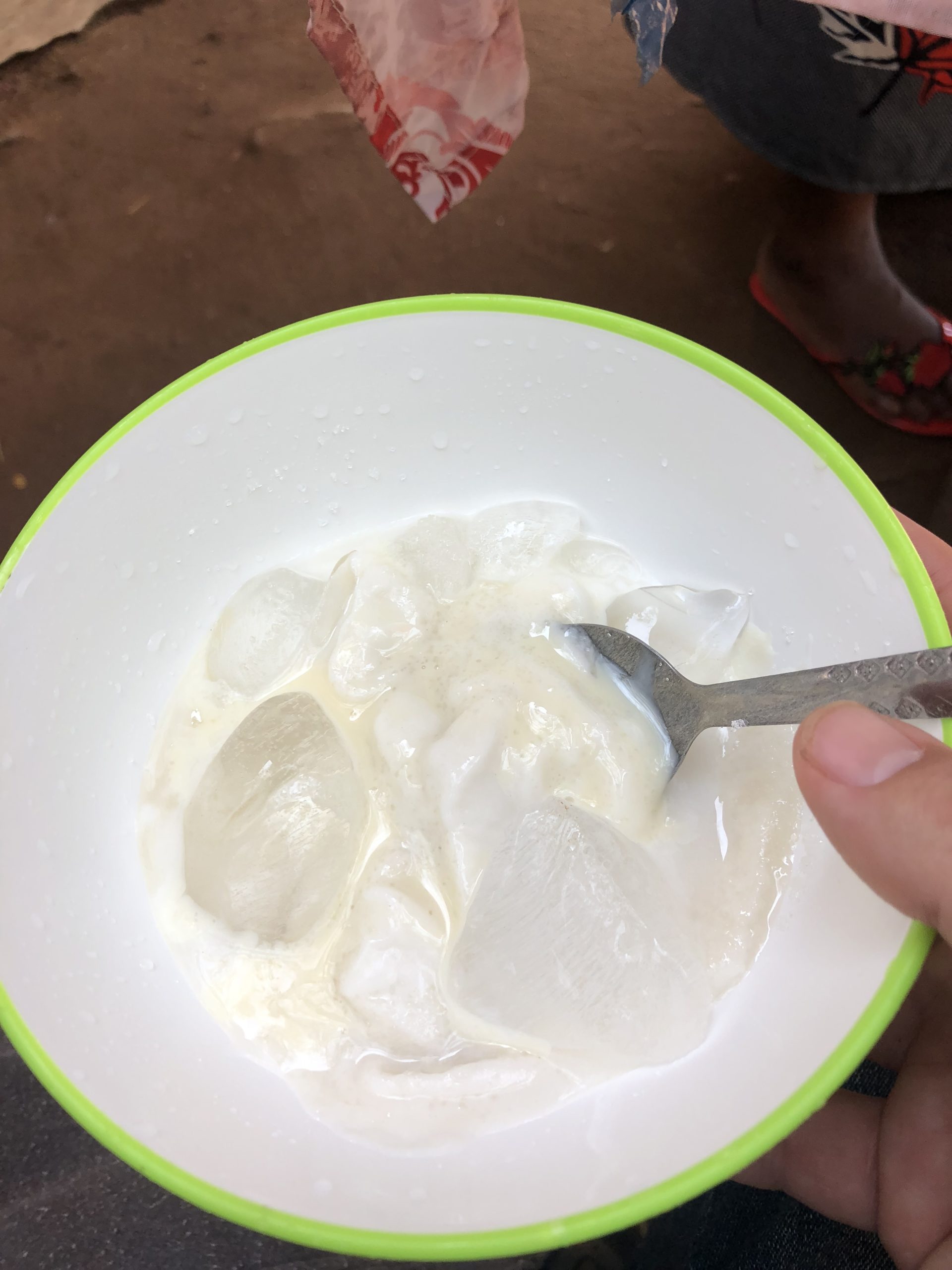
After so much excitement and a bumpy zem ride back to Porto in the mud, Rodrigue had one last surprise up his sleeve: Akpan (also known as Akassa). This popular street food is delicious and highly addictive. It’s impossible to only eat one bowl. Akpan is made from fermented corn kernels or powder. The fermented corn is then mixed with water, sweetened condensed milk and big pieces of ice to create a kind of sweet corn yogurt. It’s both dessert-like and refreshing, tasting a bit like melted vanilla ice cream poured over ice cubes. For the remainder of my time in Benin, I was thoroughly obsessed with Akpan, seeking it out in every market I visited from Porto to Cotonou to Ouidah. If you go to Benin and only eat one thing, let it be Akpan.
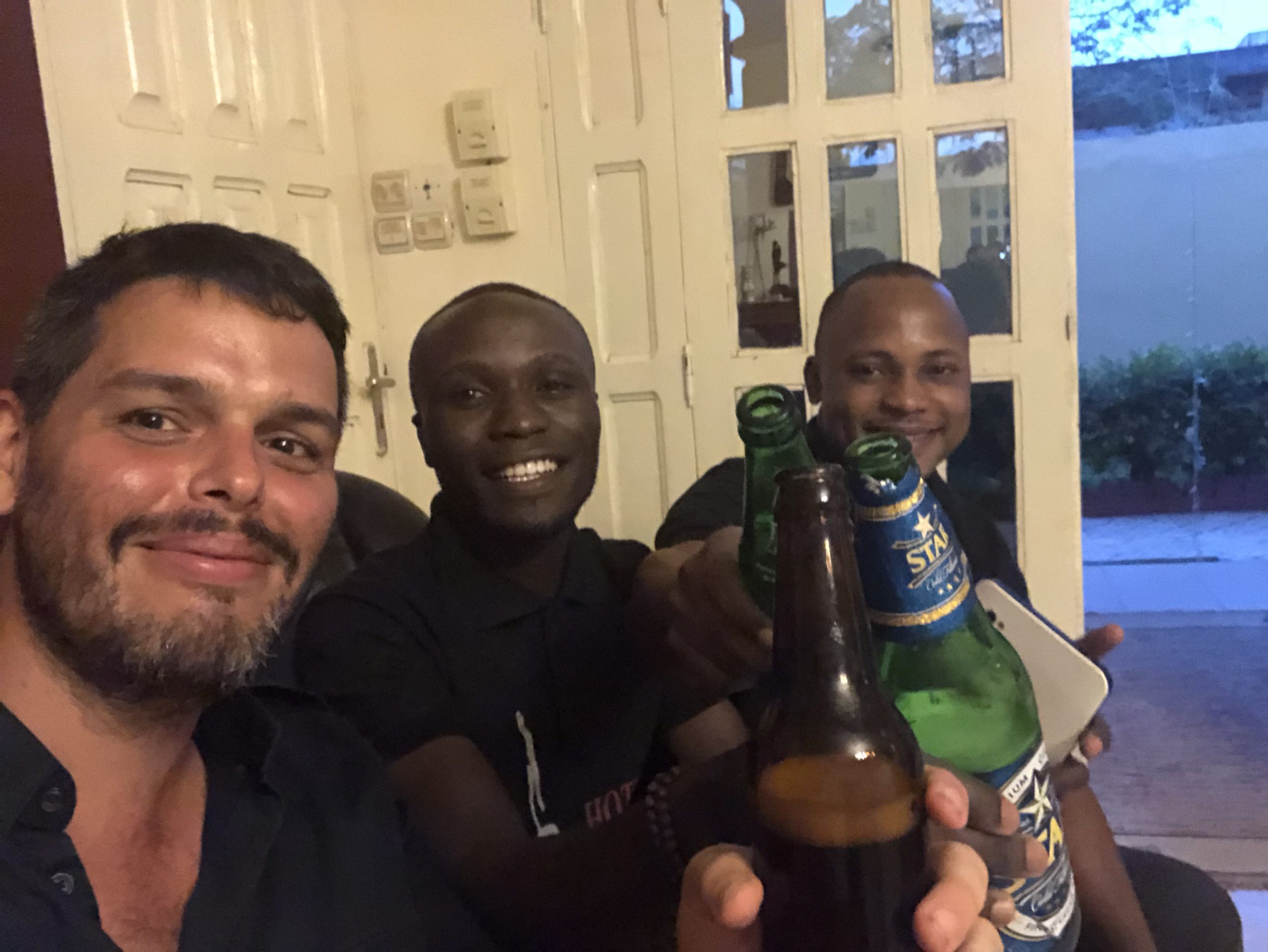
Of course, you’re going to need something with which to wash down all that sweetness, and my newfound friends helped provide the answer for that problem too: La Béninoise, the national beer of Benin. La Béninoise is a pale lager that made its debut in 1958 by the SOBEBRA brewing company. I have tried in vain to find La Béninoise back home in New York, but alas, it appears to only be sold within Benin’s borders. There was nothing better than kicking back with Edem and Robert on a beautiful night in Porto, sharing a beer and getting to know one another.
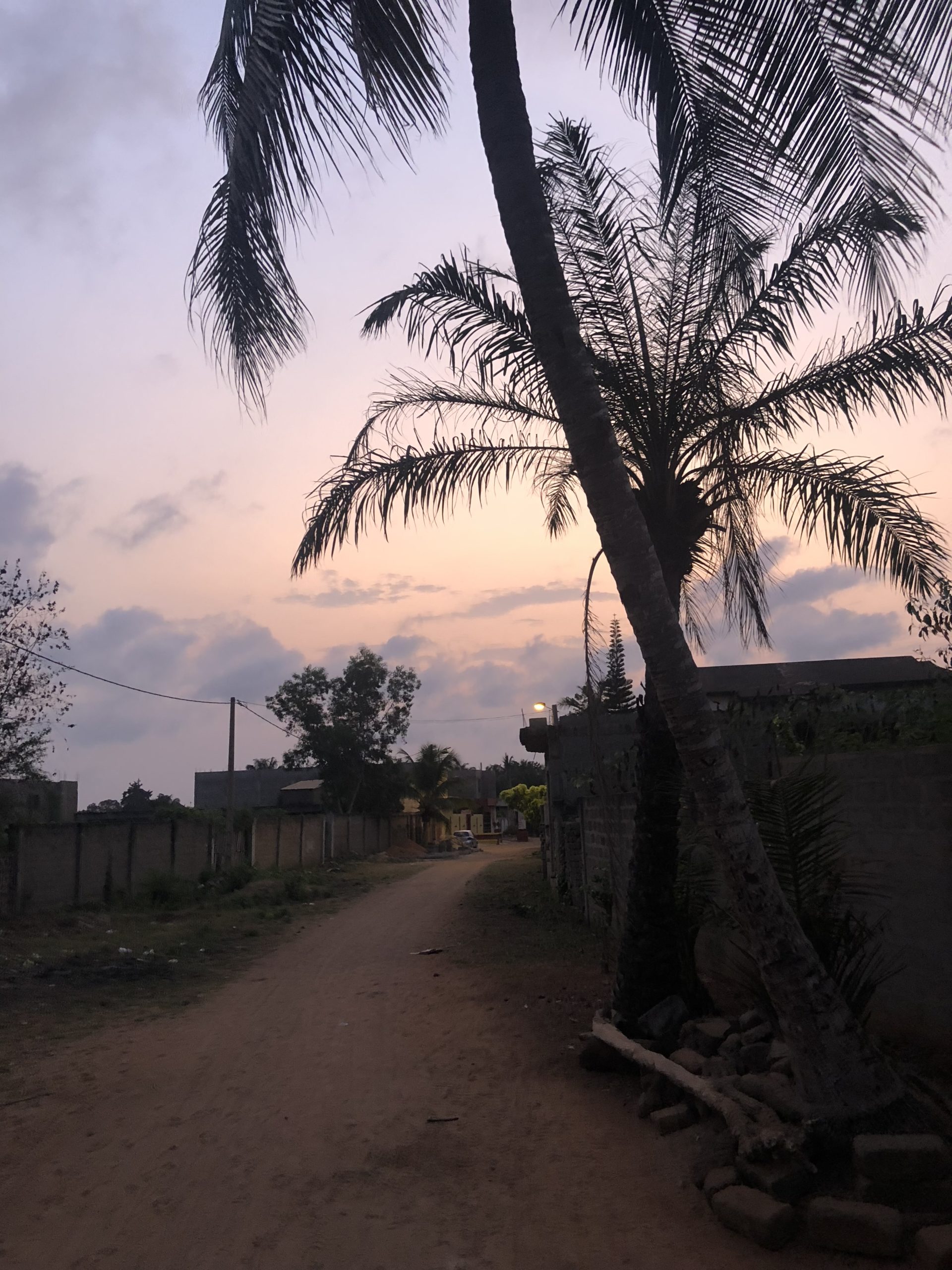
I would be remiss if I didn’t write about how much Edem and Robert’s friendships have meant to me since I left Benin. Like Igor, Cousin, Richmond, Elman and so many before them, Edem and Robert have truly become like brothers to me. Family is not defined by blood, skin color or DNA. Family is created through strengthened bonds of caring and love for another person. When you put another’s needs ahead of your own, that is family. When you care more about how someone’s day is than your own, that is family.
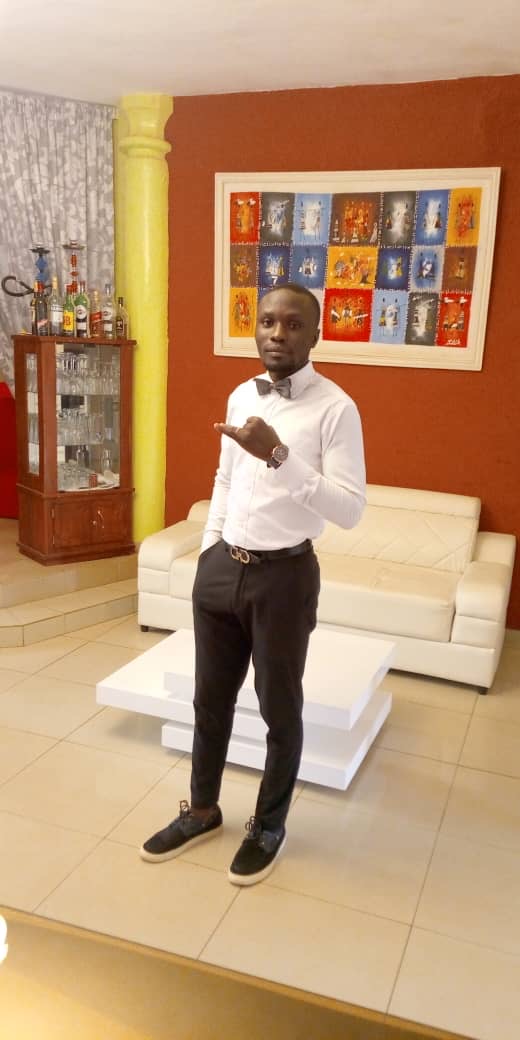
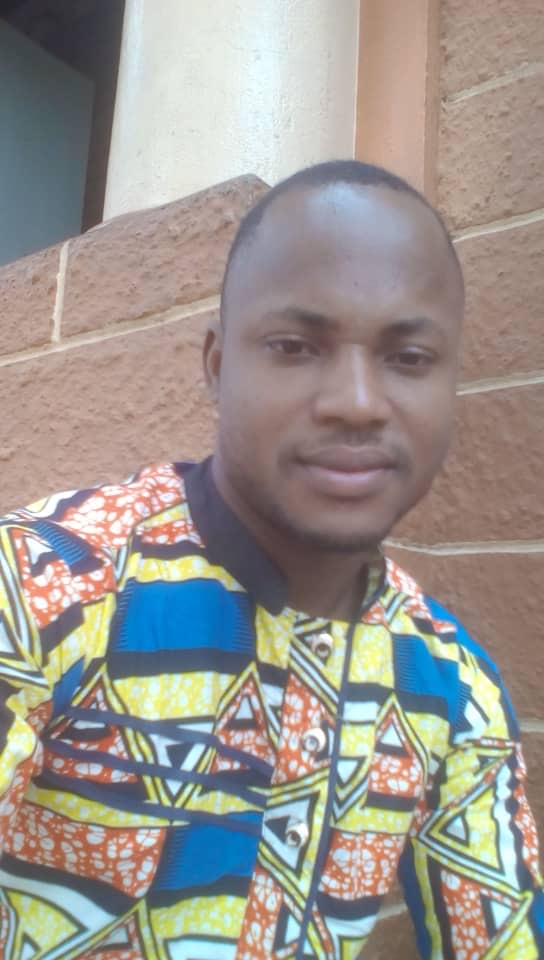
Robert, who always looks like James Bond, is from the small village of Hêvê, having moved to Porto to better his career. Robert has great taste in music and I loved watching West African music videos with him. Edem is a wonderful chef who helps his mother sell ablo on his one day off from work each week. As an only child always wishing he had a sibling, Edem thinks I have taken him under my wing as a mentor and big brother. The truth is, Edem has taught me more about life than I could ever teach him. I am truly honored to call both of them friends and I hope they know how much their friendships mean to me.
Navigating that pirogue down the Rivière Noire in Adjarra is very much a metaphor for life. We slowly glide down life’s river, experiencing new things, welcoming people into our lives and taking detours on a side streams. The sum of all these things makes us who we are, and when we travel, the size of our river expands by width and depth of infinite measure. Robert and Edem have joined me in my pirogue down life’s river along with so many others that I think it’s time I get a bigger boat!
